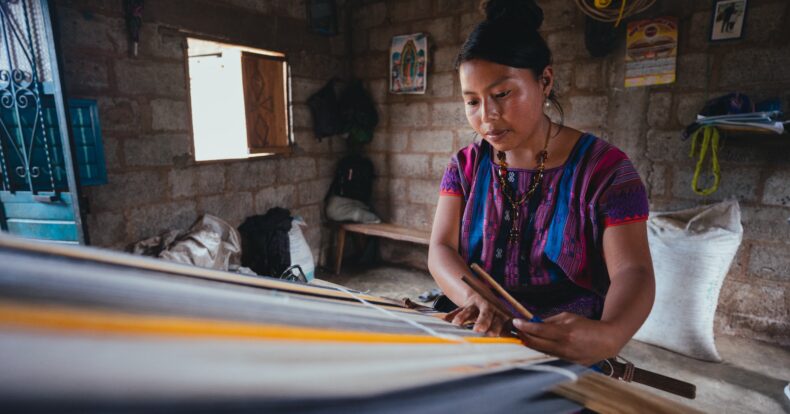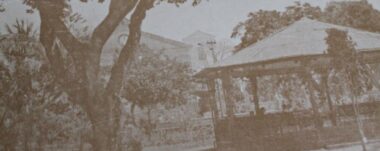Interethnic conflict over land tenure in Costa Rica’s indigenous territories

The conflictive situation regarding land tenure between indigenous and non-indigenous people in Costa Rica is an issue that dates back to pre-colonial times (during the conquest process in the Central Valley: 1560-1574), as the native peoples of the time were forced by the colonists to abandon their lands and be concentrated in indigenous villages or town councils. After independence from Spain in 1821, this type of conflict was also present until the present day. What are the indigenous peoples currently in conflict over land tenure? What has been the role of the Costa Rican State in this conflict?
Description of the 24 territories of the 8 indigenous peoples in Costa Rica
According to the 2011 census, in Costa Rica 2.4% of the total population of the country self-identifies as indigenous, which is equivalent to 104,143 of people living in the national territory; however, of this number there are only 78. 073 indigenous people belonging to the 8 indigenous peoples that exist in Costa Rica (Profe Carlos Chaves, 2020, 0:19). Compared to other countries such as Guatemala, Bolivia, Ecuador and Peru where the indigenous population represents about 40% of the total population (Yis-wa, 2021, 0:34), the number is too small.
These 8 peoples, belonging to the Chibcha family, are distributed in 24 territories of the country, which are: the Bribris, who live in the region of the Talamanca mountain range and localities in Salitre and Cabagra in the Puntarenas canton of Buenos Aires, also in the southeastern region of the Atlantic or Caribbean slope of the country; 13 clans are derived from this people and make up 13 clans. The Cabécares, who also live in Talamanca and are farther away from the non-indigenous localities.
In addition, Maleku or Guatusos are the people located in the northernmost part of the country. The Bruncas or Borucas are in the homonymous reserve in the southwest of the country, in the canton of Buenos Aires in the province of Puntarenas, which in 1956 was decreed as a legal indigenous reserve in the country, the Boruca-Térraba (Alonso, 2021, para. 8). The Ngäbe or Guaymi, who come from Panama and are therefore settled in areas such as Coto Brus and the Osa Peninsula, for example.
Chorotegas, on the other hand, inhabit the current province of Guanacaste and a sector of Puntarenas; the Térraba-Bröran, who live in the homonymous locality in Puntarenas (Profe Carlos Chaves, 2020, 0:40). The latter people come from the Térraba-naso, who were introduced from Panama to Costa Rica by the Spanish during the colonial era. Finally, the Huetares, who settled in the Central Valley and currently inhabit Quitirrisí and Zapatón (Yis-wa, 2021, 3:57).
On The Indigenous Land Tenure Conflict
The land distribution conflict between indigenous and non-indigenous people in the indigenous territories consists, in basic terms, in the fact that people who are not indigenous or who do not belong to any of the 8 groups of native peoples of the country settled in territories where these 8 communities were, therefore, those who are indigenous find themselves in a situation of invasion of their territory or in the worst case, in a situation in which they are evicted from their own lands. It is here where the natives begin a struggle to recover their territories, and where they have resorted to measures both by physical force and by legal means.
The native peoples have been forced to migrate to other territories, an issue that has also been conflictive for other people settled in areas other than the Central Valley. For this reason a series of measures were carried out regarding the distribution of these lands, so that the indigenous people could have a place to settle, live, produce, and so on; however, this would not be until 1977, since during the nineteenth century -specifically in 1835- the indigenous communal lands were privatized, and in 1847 mixed-race people dedicated to agricultural production came to own lands that were previously owned by aborigines, this through the abolition of the indigenous cabildos (Payne Iglesias, 2021, 61).
Today this conflict is still ongoing, since as Judit Alonso (2021) states regarding the indigenous response:
Decades have passed since the Costa Rican government guaranteed the country’s original peoples that it would recover their lands. In the meantime, they are regrouping on their own and reappropriating territories that were once [sic.] theirs and are currently in the hands of ranchers.
(para. 1)
This is because, as expected, individuals in Costa Rica got tired of not seeing positive results for them despite the existence of the Indigenous Law 6172, which was decreed on December 20, 1977. With this law “the Costa Rican state officially recognizes the ownership and tenure of indigenous territories in the country” (Ixchíu, 2020, para. 8), obviously for indigenous communities; however, this law was in force from this date onwards, since non-indigenous people settled before the Legislative Assembly passed this law could not be evicted.

However, even after the approval of this law, compliance to date has been almost null or partial, as there have still been non-indigenous people who have settled on lands belonging to native communities, this on the part of various sectors of the non-indigenous population of the country. Likewise, in the face of this struggle, indigenous leaders who have risen up to recover their territories and properties have been murdered (Ixchíu, 2020, paras. 9-13). This is an example of the fact that this conflict is not only extensive in its duration, but also in its complexity, since even human lives are being harmed by this conflict, in which there have been cases of criminality and violence, and in which the State has been late to mediate effectively.
The uses that these established groups carry out are cattle ranching and pineapple plantation, which has been a major trigger for indigenous peoples – such as the Bribri, for example – to demonstrate and resist in response to this situation (Méndez Montero, 2019, para. 7). The State has also been responsible for the continuation of the conflict, since its measures have been weak and of little use. And although this article is not intended to discredit the governments in power in the past or during the last decade, it does have the purpose of critically analyzing the situation surrounding this phenomenon under study, since it is a conflict that, certainly, should have been resolved earlier.
In other words, both the State in general and the responsible institutions have not taken measures to prioritize this situation in order to resolve it as soon as possible and improve the conditions of indigenous peoples from a human rights perspective or, specifically, the rights of indigenous people in Costa Rica (Schliemann, 2012, pp. 178-179).
The state has been unresponsive to cases of violence, in contrast to the invisibility of cases of criminality against the lives of indigenous leaders who have fought to recover their territories; an example of this was the case of Sergio Rojas Ortíz in 2019, who was one of these indigenous leaders, specifically Bribri; or the murder of Jhery Rivera in 2020, whose resolution of this case is still awaited. As an additional fact, these two requested in 2015 a precautionary measure to the United Nations in Costa Rica for protection against the violence that native peoples were suffering (Alonso, 2021).

The nonindigenous people settled on these lands pay the indigenous people miserable quotas, in which “they take advantage of the situation of vulnerability and misery that often accompanies the lives of these [indigenous] populations” (Méndez Montero, 2019, para. 5). As a result, this cause has also been a trigger for the discontent of indigenous communities threatened and exploited by non-indigenous people settled on their lands.
The health crisis caused by the COVID-19 pandemic as of 2020 caused the activities that the indigenous peoples intended to carry out in favor of their land tenure rights to cease or stop (Alonso, 2021), which meant a factor that discouraged them, but at the same time encouraged them to seek new strategies to deal with this situation on the part of the indigenous communities in the face of the pause.
Consequences of the indigenous land tenure conflict
The consequences of this conflict have been the assassination of indigenous people fighting to recover their lands, which has unleashed cases of criminality, which the Costa Rican state has not taken as alarming or announced to intervene effectively to stop this problematic situation between these groups.
Another example of this are the cases of women and children who have been physically beaten by non-indigenous people because they defend their territories from the invasion of non-indigenous people (UNFPA COSTA RICA, 2021). Also, as a collateral effect, institutions – such as the University of Costa Rica – have come together during the last decade to denounce these cases and march for justice in the face of cases such as the murder of Bribri leader Sergio Rojas Ortíz (Méndez Montero, 2019).

This consists of returning the lands to the indigenous communities due to the historical debt that the country has had since its different administrations with the 8 indigenous communities or peoples in the country; whose condition is that they will not be able to rent or sell such properties (Costa Rica: Gobierno del bicentenario…, 2022).
Altogether, said budget comes from the Institute of Rural Development (Inder) and the Ministry of Agriculture and Livestock (MAG), which are involved in the National Plan for the Recovery of Indigenous Territories (Costa Rica: Government of the bicentennial…, 2022), which was created since 2016 and has carried out activities such as adding 1593 properties to the list within the project, also “208 boundary markers have been built, censuses have been carried out, among other actions” (Swissinfo.ch., 2022, para. 8). However, despite all this
Given the Government’s announcement that it will begin the process to recover indigenous lands with ¢3. 200 million for compensation, the indigenous people consulted expressed their questions, including what was the process to determine if those who will be compensated were ‘good faith’ holders and how many hectares are being recovered with that amount.
(Pomareda García, 2022, para. 1)
Regarding the above quote, it must be acknowledged that such questions expressed by these communities are valid due to the history of the conflict already stated above. Likewise, as another consequence, the autonomy of indigenous peoples has been violated (Schliemann, 2012), due to the invasion even in this aspect by non-indigenous people.
In these consequences, the indigenous communities’ distrust of the government’s promises, due to the inefficiency of the past, can be added to the list of consequences; therefore, this undoubtedly implies one more reason for the Costa Rican State to prioritize this indigenous land compensation project, and begin to take the necessary measures in terms of budget and everything related to it, so that the return of lands that belong by cultural, historical and legal right to the indigenous peoples who today live in vulnerable conditions due to this phenomenon, becomes a reality.

In conclusion, the 8 indigenous peoples in Costa Rica distributed in 24 territories need the State to prioritize them in their projects of recovery and compensation of indigenous lands, because this has been a situation of conflict with non-indigenous people for centuries, so the State must enforce and comply with what was dictated and approved by the Legislative Assembly on December 20, 1977, with the Indigenous Law 6172, which guarantees this restitution of lands for indigenous communities; However, the long non-compliance and inefficiency on the part of the different governments in power in the country with respect to this issue has aggravated the situation, due to the fact that the cases of violence perpetrated by non-indigenous people against natives has increased in the last years, so it is necessary for the State to solve this conflict as soon as possible.
For this reason, it is necessary for the State to solve this conflict as soon as possible. Equally, as a domino effect, if the causes are solved, the consequences will be solved, so if the State gets down to work in fulfilling these projects and making them a reality for the indigenous communities, it will have achieved a great deal with respect to the solutions to this conflict. Also, strengthening the management of the institutions in charge of overseeing this compensation project, ensuring the effectiveness of the functions and sanctioning corrupt acts within the relevant organizations.
The Costa Rican State certainly has a historical debt with the indigenous populations in the country, and to remedy it, effective measures must be taken to ensure not only the resolution of the conflict, but also the improvement of the living conditions of the native people, ensuring not only the return of land, but also guaranteeing a quality life on these lands, where even acts of revenge or retaliation by groups of non-indigenous people around these rural communities in the country are not made invisible.
Enoc Enmanuel Salazar Lezama
History student, Universidad de Costa Rica
March, 2023
I am a screenwriter, director and film producer. I make fiction short films and biographical and historical documentaries, which I publish on the YouTube channel of my production company called TRECHO Producciones Audiovisuales; this is the link where you can see my work:
https://www.youtube.com/channel/UC7BEvltC0S6ZA-QlVwpnb0g
Navigate articles




